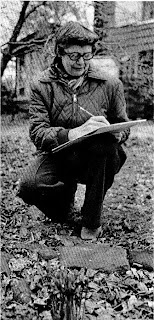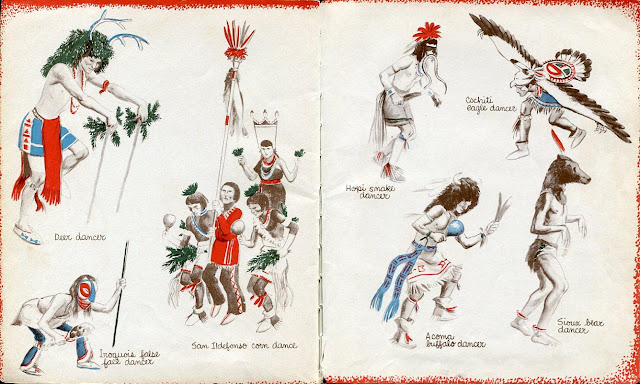 THE FIRST BOOK OF NEGROES BY LANGSTON HUGHES and Slappy Hooper by Arna Bontemps and Jack Conroy are just two of over two hundred books for children that Ursula Koering (1921-1976) illustrated. Koering grew up in Vineland, New Jersey. She began drawing at an early age and her mother enrolled her in weekend classes at the Philadelphia College of Art starting at age eight. Upon graduating from high school, Koering began as a full-time student at the Philadelphia College of Art where she majored in sculpture.
THE FIRST BOOK OF NEGROES BY LANGSTON HUGHES and Slappy Hooper by Arna Bontemps and Jack Conroy are just two of over two hundred books for children that Ursula Koering (1921-1976) illustrated. Koering grew up in Vineland, New Jersey. She began drawing at an early age and her mother enrolled her in weekend classes at the Philadelphia College of Art starting at age eight. Upon graduating from high school, Koering began as a full-time student at the Philadelphia College of Art where she majored in sculpture.After finishing her studies, Koering looked for work as a freelance illustrator, as there were no paying jobs for a female sculptor. She soon found her way into children's magazines and children's books. In an interview given in the year of her death, Koering said,
"The part of my life that I've spent creating art for children's magazines has always been personally rewarding to me. Magazines are great fun for children, and at the same time they very gently instill a sense of values--as well as literary and artistic appreciation--in children. My own early exposure to this kind of learning has made me very conscious of its importance."Koering worked directly with children as an art teacher for nine years at an all girls school in New Jersey. She left that post late in life to take a job as a medallic sculptor at The Franklin Mint, where she designed several coins, finally earning money as a sculptor.
KOERING'S ILLUSTRATION FOR CHILDREN covers all subjects and genres for many different publishers. In addition to The First Book of Negroes, Koering also illustrated The First Book of Eskimos (1952) and The First Book of Indians (1950) for the Franklin Watts First Book series, both by Franklin Folsom writing as Benjamin Brewster.
These books are also of interest, of course, for the slant put on Native American history in books meant for 1950s Americans. They are surprisingly frank about the injustices Native Americans have suffered, while trying to put as happy a spin on it as possible.
"Life has not been easy for the Indians, but many fought bravely in our army in the last war. Others who have left their reservations have shown that they can be good at special jobs [that most whites can not do]...But Indians don't believe they have to imitate everything about the white men in order to be good Americans. They know that they have taught the white men many things...They want to remember and honor the good things, while they are learning new ways of living and thinking and working in this country which was theirs long before white men and Indians had to learn how to live together."
I've posted the more interesting pages from The First Book of Indians, which include lots more of Ursula Koering's illustrations, as a Flickr set here.
 KOERING ALSO ILLUSTRATED titles by Franklin Folsom's wife Mary Elting, another prolific writer of children's nonfiction. Their first collaboration, Trucks At Work (1946), was the first in what became a long series for Elting at several publishers. Other titles included Trains At Work (1947), Machines At Work (1953), and eventually Spacecraft At Work (1966), also illustrated by Ursula Koering.
KOERING ALSO ILLUSTRATED titles by Franklin Folsom's wife Mary Elting, another prolific writer of children's nonfiction. Their first collaboration, Trucks At Work (1946), was the first in what became a long series for Elting at several publishers. Other titles included Trains At Work (1947), Machines At Work (1953), and eventually Spacecraft At Work (1966), also illustrated by Ursula Koering.Trucks At Work has what might be one of the greatest opening paragraph in a vintage children's informational book:
Here are some things to know about trucks. Their drivers call them rigs or cornpoppers or My Baby. When a truck has lots of engine trouble and is hard to drive, they say it is a dog.The opening of the second chapter goes a long way towards matching the first:
"Here are some things to know about truck drivers. They wear holes in the soles of their left shoes faster than in the right. That is because they have to press down so often on the clutch pedal to shift gears. A heavy truck can roll along in high gear on flat roads, but when it starts to climb even a small hill, the driver must shift. When he is crawling along in low gear, he says he is down in the kitchen. When he is travelling fast, he says he is highballing. Truck drivers borrowed this word from the men who work on railroads."
The book is full of such sociological observations, along with quite a lot of simple reporting, which makes it fun to read as camp. The illustrations, however, are consistently breathtaking.
To read all of Trucks At Work or just to see all of Koering's art, visit my Flickr set here. Also, compare the above fire to Koering's rendition of a similar scene in Slappy Hooper.
KOERING DID ALSO ILLUSTRATE fiction. Here are black and white illustrations to the young adult novel The Long Year (1969), Ester Wier's follow-up to her Newberry Honor book The Loner (1963). These show her ability to draw distinct and dramatic characters, a talent that would serve her many years later at The Franklin Mint.


For all of the art in The Long Year visit my Flickr set here.
And a few of her Franklin Mint coins:
All of the background material, artist photo, and The Franklin Mint coins comes from an article in the April 1976 issue of The Franklin Mint Almanac.
Coming soon: Langston Hughes's The First Book of Rhythms
All images are copyrighted © and owned by their respective holders.













No comments:
Post a Comment